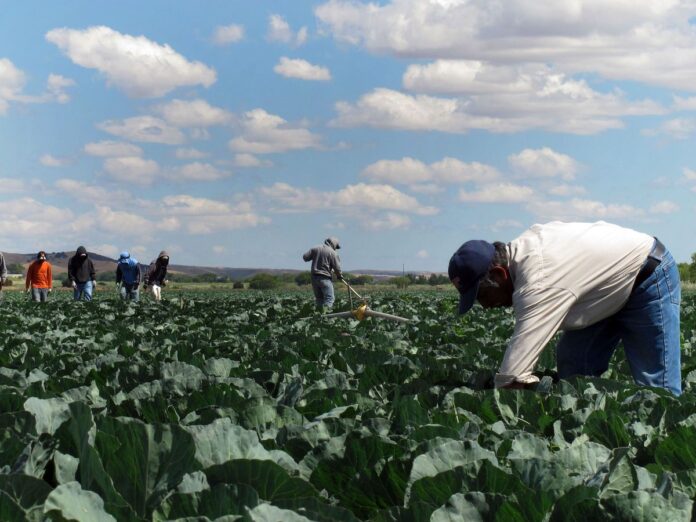Economic Implications of Federal Immigration Raids in California
Date Published: Wednesday, June 11, 2025 | 2 a.m.
Editor’s Note: “Behind the News” is the product of Sun staff, assisted by the Sun’s AI lab, which includes tools like Anthropic’s Claude, Perplexity AI, Google Gemini, and ChatGPT.
Federal immigration raids and enforcement actions against immigrant workers pose a serious threat to California’s already delicate economy. Recent events, like the detention of workers at an Ambiance Apparel warehouse in Los Angeles, highlight the precarious position of many industries dependent on immigrant labor.
The Economic Profile of Immigrant Workers in California
California has long been known for its diverse economy, but a significant part of that economic engine is powered by immigrant labor. Nearly 11 million immigrants reside in the state, making up over 25% of the population. From 2021 to 2023, about 6.1 million immigrants were actively employed, representing one-third of California’s workforce. Immigrants and their families account for an astonishing 55% of the labor force here.
In metropolitan hubs like Los Angeles, the reliance on immigrant labor reaches critical levels. Significant representation is seen in key sectors such as construction, agriculture, and various service industries, which rely heavily on immigrant workers to function efficiently.
Key Sectors Affected by Immigration Actions
-
Construction: Approximately 40% of California’s construction workforce is made up of immigrants, with many lacking documentation. Raids in this sector can halt projects, leading to enormous economic losses.
-
Agriculture: An estimated 45% of agricultural workers are undocumented. Immigration enforcement can devastate food production, leading to higher consumer prices and food shortages.
- Service Industries: Many of California’s vital service sectors—like landscaping and cleaning—are predominantly staffed by immigrants, reaching up to 60% representation in some areas.
Immediate Economic Disruptions from Immigration Enforcement
The impact of targeted immigration enforcement can lead to immediate economic disruptions that spread across different sectors:
- Construction Delays: Raids disrupt contractors’ ability to find labor, leading to delays and increased costs for projects already in need of skilled workers.
- Manufacturing Vulnerabilities: The apparel industry, for instance, faces existential threats when enforcement actions remove core workers essential to production processes.
- Agricultural Crises: The timing-sensitive nature of agricultural work means that lost labor can directly translate into unharvested crops, subsequently impacting food supply chains.
Psychological and Economic Ripple Effects
The effects of immigration enforcement stretch beyond the workplaces directly impacted. The fear of raids creates an atmosphere of anxiety that can lead to absenteeism among workers—both documented and undocumented. The ramifications can extend to local businesses, as diminished workforce numbers lead to fewer customers and reduced economic activity.
Communities can experience broader economic destabilization, characterized by decreased tax revenues and reduced consumer spending. Research suggests that removing all undocumented immigrants from California could lower average annual wages by nearly $1,000 per worker within five years.
Disruptive Impacts on Construction Industry
The construction industry epitomizes the vulnerabilities that immigration enforcement creates. As labor shortages already plague the sector, the removal of immigrant workers can lead to unfilled positions in essential trades. This situation not only disrupts active projects but also inflates costs. The operational costs can surge as firms are forced to offer significantly higher wages to attract native-born workers, escalating total project expenses.
Community Economic Health at Risk
The implications of immigration enforcement ripple through entire communities. Small businesses that depend on immigrant labor and customer bases face significant challenges, often leading to closures. The erosion of local tax bases, coupled with reduced economic activity, further diminishes community resources, affecting education, health care, and infrastructure—elements vital for thriving neighborhoods.
Historical Insights and Future Implications
Historically, communities that have faced systemic removal of immigrant workers often do not recover quickly. During the post-pandemic economic recovery in 2022, millions of jobs went unfilled, highlighting a paradox where many native-born Americans remained outside the labor force.
Cascading Consequences of Labor Removal
Removing immigrant workers induces numerous negative outcomes that affect various sectors:
-
Infrastructure Development: Delayed construction projects hinder economic growth, degrading crucial infrastructure.
-
Agricultural Production: Labor shortages can cause crop losses, affecting food security and leading to price increases.
- Essential Services: Reduced capacity in health care and caregiving sectors worsens service shortages, impacting the community’s overall well-being.
The Interconnected Nature of Labor Markets
The economic landscape is increasingly interdependent. Research shows that immigrant and native-born workers often complement each other. Therefore, removing immigrant workers can inadvertently lead to job losses among native-born counterparts. Each sector reliant on immigrant labor holds repercussions that can affect local and even regional economies.
With the complexity of California’s economic structure, the removal of immigrant workers goes beyond a labor issue; it transforms into a substantial economic challenge that could impact various facets of life within the state.
Thus, understanding the intricate web connecting immigrant labor to California’s economy reveals both vulnerabilities and challenges that require addressing systemic issues rather than merely punitive measures.
